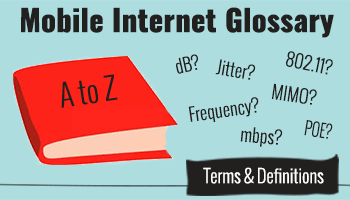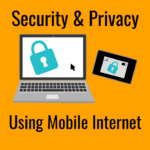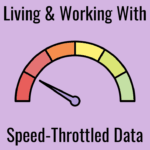
Before you get frustrated wondering why you might need a POE to power your CPE to get remote 802.11g when you’d really rather have more dB on your LTE – check our glossary below.
-
NAT
Network Address Translation (NAT) is a method to translate IP addresses between networks. It also allows a single, public IP address to be used by multiple private IP addresses. This aspect of NAT is essential for creating private networks in home and mobile routers. It's also becoming a common tool for internet service providers to manage dwindling numbers of IPv4 network addresses until the newer IP addressing system, IPv6, is fully implemented.
NAT can also refer to network restrictions in multiplayer video games that prohibit certain types of multiplayer gaming connections.
-
Network
A system of devices that are joined together, either by wires or wireless, so that they can communicate by exchanging information. A network can also share an internet connection to individual devices.
-
Network Management
When a carrier reserves the right to de-prioritize the traffic of high bandwidth users. They generally have a threshold before this kicks in, although some plans are always subject to it.
After that threshold is reached, if you're on a cellular tower that is experiencing congestion, your usage might be slowed down in relation to other customers. Once the tower is no longer congested, full speeds should resume.
When on underused towers, you may never experience it. But if you're frequently in congested areas, it can be a problem - especially during peak hours.
-
Operator
Operator is another label often used to describe cellular companies since they are operating a network on behalf of their customers.
The network operator owns or controls the licensed radio spectrum and the network infrastructure necessary to provide service over that spectrum.
Contrast this to an MVNO or reseller, which does not own the network but which leases service from a network operator.
-
OS
OS stands for operating system. An operating system is the software that supports a computer's (or phone, tablet, etc.) basic functions, such as scheduling tasks, executing applications, and controlling peripherals.
-
Oscillation
If the outside antenna for a cellular booster picks up the signal from the inside antenna instead of the cellular tower, oscillation happens. If the booster is properly designed, it will power down to prevent this - thus limiting the effectiveness of a booster.
This is the same phenomena as walking too close to a speaker with a microphone – leading to a howling screech. It's a feedback loop.
The best way to avoid oscillation is to put as much distance as possible between the inside and outside booster antennas, and to keep the antennas pointed away from each other.
-
Packet Loss
Some speed testing apps report a percentage of “packet loss.” Think of this as letters lost in the mail. Substantial and persistent packet loss on a connection means the connection is unreliable, and web pages may not reliably load.
-
Peplink
Peplink is a manufacturer of enterprise routers with robust mobile internet features that have become very popular with our audience. They used to also use the branding term 'Pepwave' to refer to their cellular embedded routers, but they dropped that term in 2022 to standardize on the Peplink brand.
-
Ping
How much time elapses before receiving a response to a signal. Used in connection speed testing.
-
PoE
Power over Ethernet.
Some networking equipment is powered over an Ethernet network wire instead of via a dedicated power cord and power supply. This makes wiring much simpler since only a single wire needs to be run to the device. To get the power onto the Ethernet wire, a PoE injector is used to energize the wire.
-
POTS
POTS is shorthand for Plain Old Telephone Service – the old way of getting online via dialing a modem on a regular wired phone line. Also known as a landline.
-
pUDP
Short hand for Verizon's now retired Prepaid Unlimited Data Plan for Jetpacks, mobile hotspot devices and routers. These were available from 2018 to 2019 for $65/month with unlimited data subject to network management without throttling.
For more on these plans: Our pUDP Guide.
-
Refarming
When cellular carriers shut down older networks, they free up frequency spectrum that they can then reuse to support newer technologies. This process is called refarming the network.
The downside of refarming is that devices based upon older technologies will get slower and have less coverage, and eventually become useless. But newer technologies are much faster and more efficient, making things (eventually) better for everyone.
-
Repeater
A repeater actually recreates and broadcasts a new clean signal. Cellular repeaters are rare because to rebroadcast (and not just amplify) a signal requires close cooperation with the carrier. But Wi-Fi range extending systems typically are repeaters.
This contrasts with a booster which amplifies the signal, including any signal noise.
-
Retired
When an internet provider no longer offers a plan to new customers, that plan is considered retired.
Most often, those who had a plan that is now retired are grandfathered in - meaning they get to keep their plan, features and pricing for as long as they keep paying the bill.
Sometimes grandfathered in plans can be transferred to other customers, but this is carrier and plan dependent.
-
Roaming
Roaming is when a cellular carrier has agreements with other networks to utilize their towers, helping the carrier provide connectivity to customers who are just passing through areas the carrier doesn’t directly service.
A carrier may have different limits on their plans for domestic roaming (ie. within the U.S.), North America (Canada/Mexico), and internationally.
-
Router
A router acts as the hub of a local network. The WAN (wide area network) connection from the router provides the upstream connection from your local network to the internet.
Usually, a router is required to allow multiple devices to share a single internet connection.
-
RSSI
RSSI stands for Received Signal Strength Indication – an arbitrary mapping of the power received by an antenna (in dBm) to a number.
How this number is calculated varies greatly from device to device.
This is usually simplified into a visual bars or dots display. Signal strength is not necessarily correlated to data speeds.
-
Satellite
Satellites in orbit above the earth are invaluable for long-distance communication, and some support providing an internet connection. For those really going off grid away from cellular towers and Wi-Fi, satellite internet is a great option.
Satellite internet requires two-way communication between a receiver on the earth and the satellite in orbit - which requires very precise aiming. There are two types of satellite internet service, LEO and GEO.
See our Guide for more information: Satellite Internet
-
SIM
SIM stands for Subscriber Identity Module. The tiny SIM card is mandated on GSM and LTE networks and identifies you to the network.
A SIM card is what holds your cellular plan and number. Swapping your SIM into a new phone or device moves your service and phone number to that new device.
SIMs come in a range of sizes – Full-Size is extinct, but Mini-SIM, Micro-SIM, and Nano-SIM are all in common circulation.
There are also eSIMs which are built into the device itself are not removable.
-
SISO
SISO is short for 'Single In Single Out' and refers to a single antenna in one structure. This is opposed to MIMO, which is 'Multi In Multi Out' and refers to a structure that contains multiple antennas meant to work with each other.
Multi SISO antennas can be used with a device to mimic MIMO functionality, an approach we refer to as mock-MIMO around here.
-
Smartphone
Most cellular phones these days are smartphones - they do more than just make calls. They are actually computers running an operating system that allows you to run apps for checking e-mail, surfing the web, plotting your travels, manage social media, playing games and watching video.
Smartphones also allow for creating a personal mobile hotspot, allowing you to use your plan's data allowance to get laptops and other devices online.
Apple iOS and Android are the two leading smartphone operating systems presently.
-
Spectrum
The electromagnetic spectrum is the range of all possible frequencies of radiation, ranging from extremely high- frequency gamma rays and X-rays through visible light to infrared to radio waves.
The radio spectrum is defined as 300GHz to 3kHz, and it is broken for convenience into bands.
-
Starlink
Low earth orbit satellite internet constellation built by Elon Musk's SpaceX - bringing mobile broadband across the globe. Auto-correct often changes this word to Starling. Starlink continues to evolve as SpaceX adds more satellites.
For more: Starlink Resource Center
-
Sub-6
5G technologies are not limited to millimeter wave (mmWave) spectrum. Carriers can also deploy 5G onto lower frequency cellular bands that have greater range, but slower speeds.
The term "Sub -6" or "low band" has become shorthand for the "lower than 6GHz" cellular bands, to distinguish them from the very high mmWave 5G spectrum that broadcasts at 24GHz or higher.
All 4G/LTE bands are technically "sub-6", though this label is primarily used when discussing 5G technology.
-
T-Mobile
One of America's major cellular carriers, often referred to as the Magenta Carrier. They also own the prepaid brand Metro by T-Mobile.
For more: Which Cellular Carrier is Best for RV or Boat Mobile Internet?
-
TCP/IP
TCP stands for Transmission Control Protocol and IP stands for Internet Protocol.
IP is the protocol used to communicate across networks using IP addresses (see IPv4 & IPv6)
TCP is the protocol used to communicate from applications (webpages, email, ftp, media streaming, etc.) to the Internet Protocol.
-
Telematics
Telematics is a system that remotely monitors multiple aspects of a vehicle and combines that information with other data, like GPS and cellular data communication, to provide various services.
This integration allows detailed monitoring of a vehicle's status, location, speed, and health.
Common telematics features include: automated crash response, stolen vehicle disablement and recovery, local and/or remote vehicle diagnostics, driver monitoring and several types of location services including routing, navigation and location history.
-
Tethering
Using a USB cable to directly attach the phone/tablet to a computer or router. This allows other devices to share the cellular data connection to get online .
Usage of tethering (or mobile hotspot - which is the same concept, but over wireless connections) may have restrictions on some cellular data plans.
-
Throttling
Throttling is intentionally slowing down a cellular data connection to run at a slower speed for specific tasks, or after a certain usage.
Unlike network management where you may encounter slower speeds only during times of congestion - throttling always happen regardless of local tower conditions.
Such as after 15GB of mobile hotspot usage, or reduction of video resolution.
-
Unlimited
“Unlimited” is the holy grail of mobile data, but read the fine print and you can find mobile hotspot limits, throttling, video resolution reduction, and network management.
Unlimited data and unlimited speed are different things to the carriers and they've successfully redefined the term unlimited to just mean "no overage charges".
Finding a plan that meets your needs will require understanding the limits and how they impact your mobile internet access.
-
Upload Speed
Upload speed tells you how fast data is able to get from your device to its destination. For many typical internet tasks upload speeds don’t have a huge impact.
Upload speeds however are critical for video chatting and uploading large files like photos, videos or cloud-synced backups.
Speeds over 500Kbps are the bare minimum for video chat. Speeds over 1.5Mbps should deliver smoother results. And 5-10 Mbps for allow for higher definition broadcasts and zippy file uploads.
-
Verizon
One of America's major cellular carriers, often referred to as the Red Carrier. They also own the prepaid brand Visible.
For more: Which Cellular Carrier is Best for RV or Boat Mobile Internet?
-
Video Broadcasting
Live streaming video over the internet allows for webinars, demos, broadcasts and more. Applications can include YouTube Live, Facebook Live and Twitch.
For more: Video Conferencing & Broadcasting Over Mobile Internet
-
Video Conferencing
Two way video chat applications allow for virtual meetings and webinars. Platforms include Zoom, Skype, Microsoft Teams, FaceTime and more.
For more on this topic: Video Conferencing & Broadcasting Over Mobile Internet
-
Video Streaming
Watching content online over video streaming services provides entertainment on the road, but can use a lot of bandwidth. Services can include Netflix, Hulu, YouTube, AppleTV, Roku, Chromecast and more.
For more on this topic: Video Streaming Over Mobile Internet: TV, Movies & Entertainment on the Go
-
VOIP
VOIP stands for Voice Over Internet Protocol, and refers to technology and service providers that allow for traditional (not cellular) phone calls to be placed over the internet. VOIP calls can be placed either via specialized applications or by plugging a regular landline phone into a VOIP adaptor that connects to the internet.
-
VoLTE
VoLTE means Voice over LTE.
In the early days of 4G/LTE, smartphones needed to switch back to 3G networks to make voice calls. Once the cellular networks were upgraded to support VoLTE and VoLTE compatible devices came out, the 3G network was no longer needed and the radio could stay in 4G mode all the time.
Older 4G phones without VoLTE support will no longer be able to make voice calls once the 3G networks they rely on are retired.
-
VoNR
VoNR means "Voice over New Radio" - and is a technology that allows for voice calls to be made over 5G networks without needing to switch back to 4G for the duration of the call.
VoNR is part of the evolution towards 5G networks being able to exist without relying on 4G for some functions - and is similar to how "Voice Over LTE" (VoLTE) was part of the evolution from 3G to 4G networks.
-
VPN
VPN = Virtual Private Network.
A VPN encrypts all the data coming to and from your computer, and sends it to a remote server that then connects to the public internet on your behalf. This prevents anyone on your local network from being able to eavesdrop on you.
If you are traveling away from home, you can use a VPN server so that you appear still to be connected from your area.






 Mobile Internet Resource Center (dba Two Steps Beyond LLC) is founded by Chris & Cherie of
Mobile Internet Resource Center (dba Two Steps Beyond LLC) is founded by Chris & Cherie of